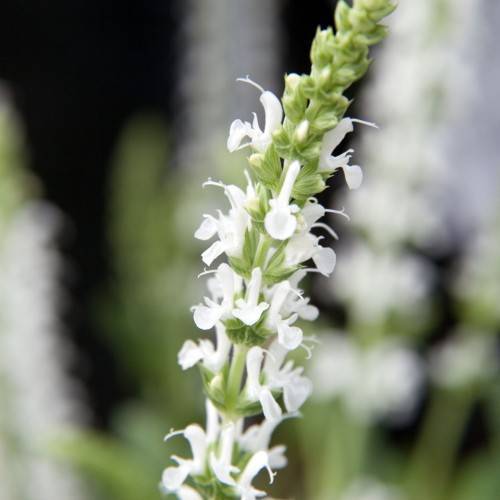
wood sage
Salvia sylvestris 'Schneehugel' SNOW HILL
Cycle:
Herbaceous Perennial
Watering:
Minimum
Hardiness Zone:
4 - 8
Flowers:
Flowers
Sun:
Full sun
Leaf:
Yes
Growth Rate:
Low
Maintenance:
Low
Care Level:
Medium
watering
Wood Sage should be watered once or twice a week in the growing season, or when the top 2-3 inches of soil is dry. Water thoroughly, making sure all of the soil is saturated. In the winter, when the plant is dormant, water about once every 2 to 3 weeks. Make sure not to overwater, as this will cause root rot.
sunlight
Wood sage requires full sunlight for up to 8 hours per day. This plant species grows best in sunny locations that receive plenty of light and warm temperatures. The ideal time to receive sunlight for wood sage is from late morning until late afternoon. This period of time provides your wood sage with the longest period of uninterrupted sunlight. Avoid planting your wood sage in shaded areas or those that receive less than 8 hours of sunlight per day.
pruning
Wood sage (Salvia sylvestris 'Schneehugel' SNOW HILL) should be pruned moderately, typically in late winter or early spring. Remove old, dead, or damaged stems and thin out any excess growth. This species tends to form an open mound in the garden, so it may need to be cut back to a certain size to keep it looking tidy. For more specific techniques, avoid pruning back to bare wood and leave a few healthy buds and stems to provide the plant with new growth. By removing damaged or dead areas, wood sage can be rejuvenated and shaped into desired form.
